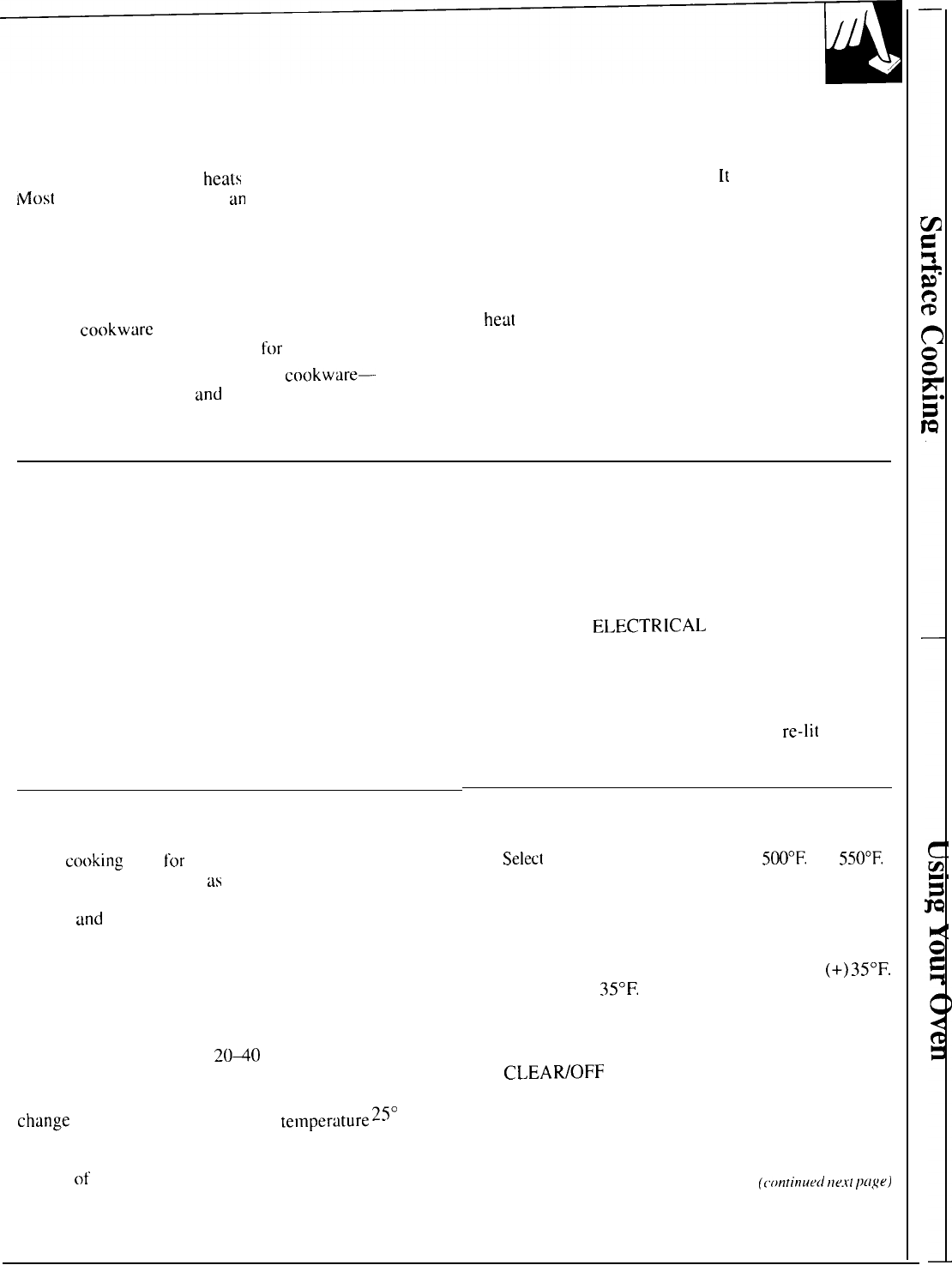
Top-of-Range Cookware
Aluminum:
Medium-weight cookware is
recommended because it
heals
quickly and evenly.
IMost
foods brown evenly in
tin
aluminum skillet.
Use saucepans with tight-fitting lids when cooking
with minimum amounts of water.
Cast Iron:
If heated slowly, most skillets will give
satisfactory results.
Enamelware:
Under some conditions, the enamel
of some
cookworc
may melt. Follow cookware
manufacturer’s recommendations
for
cooking methods.
Glass:
There are two types of glass
cookware-
those for oven use only
and
those for top-of-range
cooking (saucepans, coffee and teapots). Glass
conducts heat very slowly.
Heatproof Glass Ceramic:
Can be used for
either surface or oven cooking.
[t
conducts heat
very slowly and cools very slowly. Check cookware
manufacturer’s directions to be sure it can be used
on gas ranges.
Stainless Steel:
This metal alone has poor
heating properties and is usually combined with
copper, aluminum or other metals for improved
heut
distribution. Combination metal skillets usually
work satisfactorily if they are used with medium
heat as the manufacturer recommends.
USING YOUR OVEN
Electric Ignition
The oven burner and
by electric ignition.
Power Outage
broil burner are lighted
CAUTION: DO NOT MAKE ANY ATTEMPT
TO OPERATE THE ELECTRIC IGNITION OVEN
To light either burner,
touch the pad tor the desired
DURING AN
E1..ECTR1CAL
POWER OUTAGE.
function and press the INCREASE or DECREASE
Neither the oven nor the broiler can be lit during an
pad until the desired temperature is displayed. The
electrical power outage. Gas will not flow unless the
burner should ignite within 30-90 seconds.
glow bar is hot.
After the oven reaches the selected temperature, the
If the oven is in use when a power outage occurs,
burner cycles—off completely, then on with a full
the oven burner shuts off and cannot be
re-lit
until
flame—to keep the oven temperature controlled.
power is restored.
Adjusting the Oven Thermostat
When
cot~king
food
for
the first time in your new oven,
use time given on recipes
as
a guide. Oven thermostats,
over a period of years, may “drift” from the factory
setting,
und
differences in timing between an old and a
new oven of 5 to I O minutes are not unusual. Your
new oven
has been set correctly at the factory and is
more likely to be accurate than the oven it replaced.
We do not recommend the use of inexpensive
thermometers, such as those found in grocery stores, to
check the temperature setting of your new oven. These
thermometers can vary by
2040
degrees.
If you think the oven should be hotter or cooler,
you can adjust it yourself.
To decide how much to
chtinge
the thermostat, set the oven
temper~ture
25°
F.
higher or lower than the temperature in your recipe.
then bake. The results of this “test” should give you
an idea
of
how much the thermostat should be changed.
TO ADJUST THERMOSTAT:
1.
Press the BAKE pad.
2.
Setect
an oven temperature between
500°F.
and
550°F.
3. Immediately, before BAKE indicator stops
flashing, press and hold the BAKE pad for about
4 seconds. The red display will change to the oven
adjustment display.
4. The oven thermostat can be adjusted up to
(+)
35°F.
hotter or (–)
35°F.
cooler. Use the INCREASE or
DECREASE pads to select the desired change in
the red display.
5. When you have made the adjustment, press the
CLEAWOFF
pad to go back to the time of day
display. Use your oven as you would normally.
NOTE: This adjustment will not affect Broil
or Clean temperatures. It will be remembered
when power is removed.
(C,,nlinue(l
Ile.rl
/)fige)
11


















